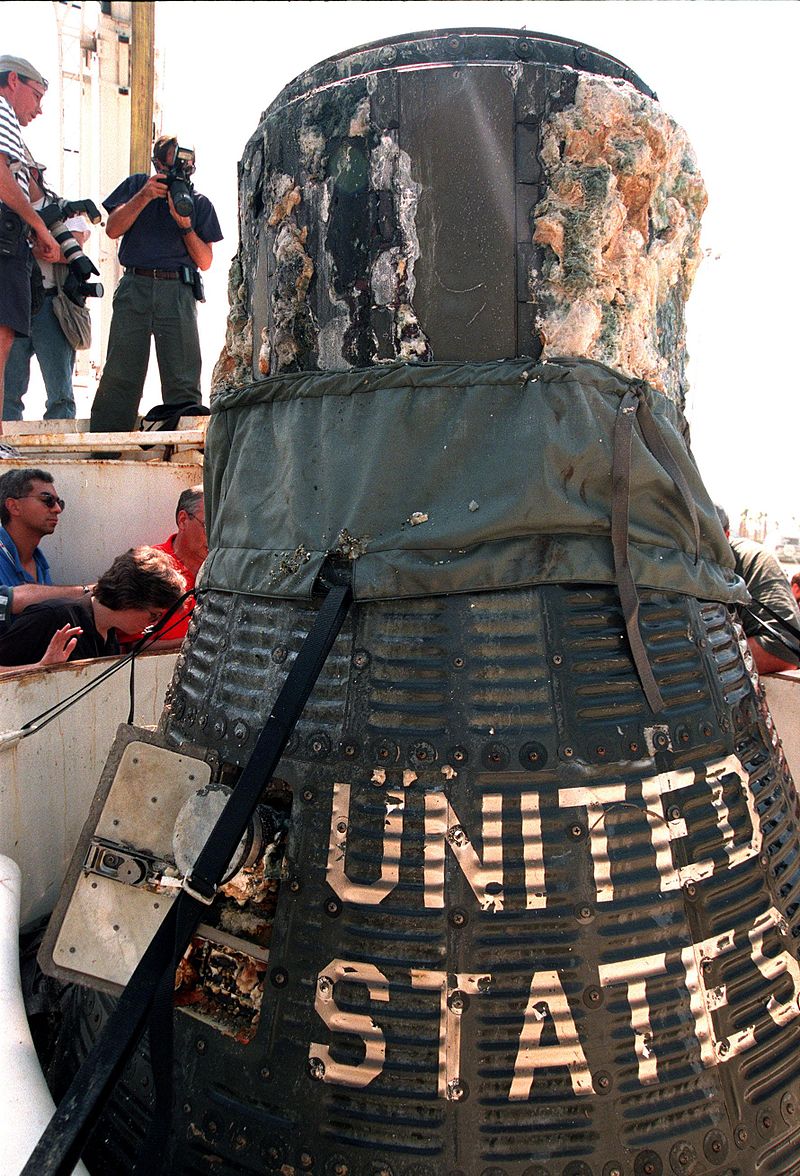Artifact Category: film, lucite.
Date of use: July 21, 1961.
Manufacturer: Lucite made by Kansas Cosmosphere and Space Center.
Dimensions: 21.3 x 4.3 x 7.2 cm.
Weight: 561 gr.
Program: Mercury.
Flown Status: flown.
Description: This filmstrip from Liberty Bell 7 recovered from the Atlantic Ocean on July 20. 1999, from a depth of 16.043 feet, was removed during an extensive restoration conducted on the spacecraft by the Kansas Cosmosphere and Space Center In Hutchinson, Kansas. The pilot observation camera, in which the film was housed, dissolved over time and the film fell to the floor of the capsule where it was encased in mud and corroding debris. The 38-year exposure 10 the elements made the film unsalvageable and it could not be returned to the capsule during the restoration. Issued in commemoration of the 40th anniversary of the Liberty Beil 7 fight, proceeds derived from making these limited edition artifacts available was used to support the Cosmosphere’s exhibit and education programs.
However, shortly after splashdown in the Atlantic Ocean, the explosive bolts of the capsule's hatch unexpectedly fired, causing the capsule to flood with water and sink to the bottom of the ocean. Grissom was able to escape and was rescued by a recovery helicopter, but the spacecraft was lost.
The cause of the hatch failure has been debated over the years, with some suggesting that Grissom may have accidentally triggered the hatch release switch, while others believe it was a malfunction of the hatch mechanism itself.
A close-up of the Liberty Bell 7 capsule, recovered from the ocean floor, shows the lettering "United States" still clearly visible on its side. Credit: NASA.
Despite the loss of the spacecraft, the Liberty Bell 7 mission was considered a success in terms of the performance of the Mercury capsule and Grissom's ability to manually control it.














Follow me